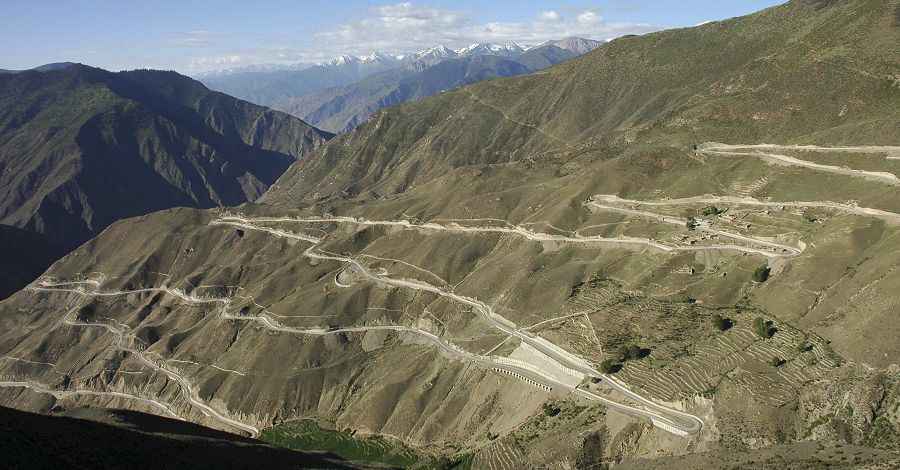Sichuan-Tibet Highway is one of the world's highest roads
Sichuan-Tibet Highway is a high mountain road located in China. Nonetheless, it’s a regular route for truck drivers heading to the roof of the world.

How long is the Sichuan-Tibet Highway?
The road is 2,142 km (1,330 miles) long, running from Chengdu (on the east) to Lhasa (in Tibet on the west). Originally called the Kangding-Tibet Highway (a section of the No. 318 National Trunk Highway), it takes you through vast, open landscapes with majestic peaks vaulting skyward. The plateau areas are dotted with castellated Tibetan homes and an infinite number of contentedly munching yaks. Travelers can enjoy the magnificent and changeable scenery ranging from warm spring to cold and snowing winter, which makes you intoxicated. This climate will be changing in front of you, and you may think, “days in heaven, but years on the earth.”
Is the Sichuan-Tibet Highway challenging due to the elevation?
Landslides and rock avalanches are common. The road stretches into Lhasa passing Ya’an, Garze, and Chamdo and traverses 14 high mountains which average 4,000-5,000m, spans dozens of famous rivers (Dadu River, Jinsha River, Lantsang River, Nujiang), crosses primeval forest and numerous dangerous sections. Oxygen is scarce - only half of that at sea level. On top of this, the road itself presents challenges - it makes 99 harrowing switchbacks along a 38-kilometer stretch as it swings down the mountainsides - starting at the 4,651m (15,259ft) Ye La Mountain, before descending nearly 1,200 meters to a dangerous bridge. If that’s not enough, drivers must contend with regular landslides coming down from the cliffs, and the army stands on guard at the pass 24 hours a day. The Sichuan-Tibet Highway is also infamously known for bad driving surfaces and sharp mountainside hairpins. Driving along single track sections in bad weather can be a great challenge for a less experienced driver.
How long does it take to drive the Sichuan-Tibet Highway?
The road can be impassable in winters. Rain, ice, and a host of other chilly winter challenges last for close to ten months, making driving along this road a treacherous journey even for the most experienced driver. The road is not paved, which makes it a mud trap during the rainy season. You will often come across a thousand-car jams stretching for miles. The real danger is not getting stuck in the jam but the hostilities that crop up among bored drivers. There are constant fights, theft, harassment, and even kidnappings for money when drivers are stuck in the mud for weeks. The trip may take around 15 days if you are not in a hurry.
When was the Sichuan-Tibet Highway built?
Construction of the highway began in April 1950, and on December 25, 1954, it was opened. Sichuan-Tibet highway is dangerous but a beautiful road route, where you can feel the real nature. Snow mountain peaks, mountain passes, and deep gorges can be seen along the road route. In China, the number of deaths caused by car accidents had nearly doubled in the past 20 years, climbing from 3.9 to 7.6 per 100,000 of the population between 1985 and 2005. The sight of wrecked vehicles scattered along the highway is a common scene. In 2011, a bus was reported to have veered off the road and plunged into a deep ravine, killing 16 passengers.
Pic: 张骐